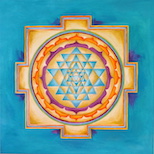THE STAGES OF CONSCIOUSNESS AND VEDANTA
THE ANCIENTS ABOUT MEDITATION
Ancient books have left us a real treasure to read, think, practice. The Vedanta science explained the stages of consciousness for many hundreds of years before we began to meditate and practice Yoga.
Vijnana Bhairava Tantra is an old text on the knowledge of mind and spirit. It teaches 112 different meditation techniques that are referred to as dharana or concentration. Osho described these techniques very simply, but also extensively in The Book of Secrets.
The way of living and loving, breathing, thinking and acting in the way of Tantra science, leads (can lead) to the ultimate state of consciousness. That ultimate, last state of consciousness can only be reached with a well-prepared heart, body and focus of mind. Unfortunately, this very noble state cannot be reached by shortcuts. The ultimate state of consciousness is not a story or a comment. It is really the last state of consciousness.
A short note: the lines of this complete book-web site speak of stairs. If you put effort and love into reading and decoding, you’ll find plenty of answers and inspiration in between the lines.




